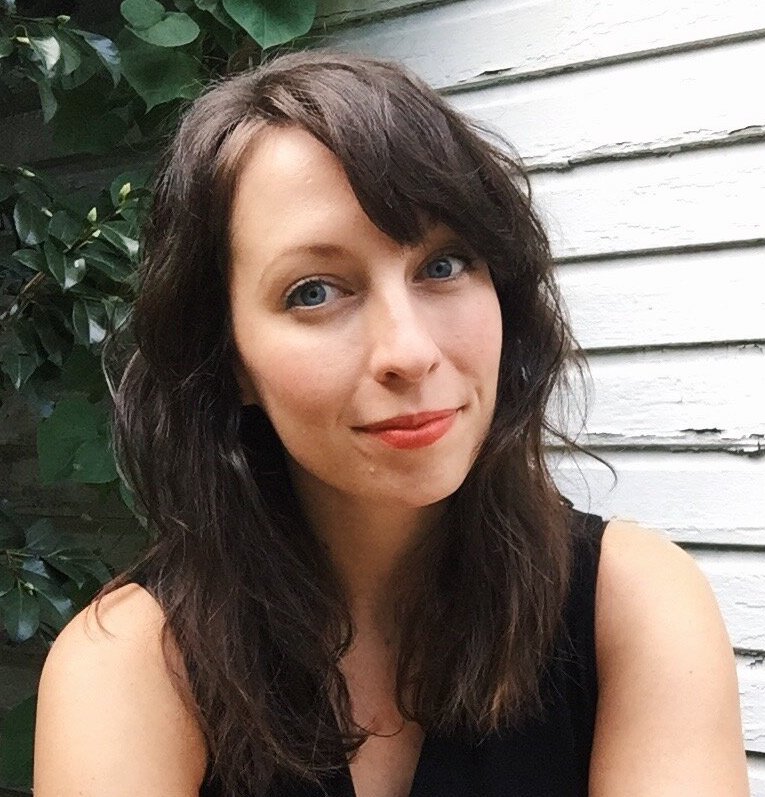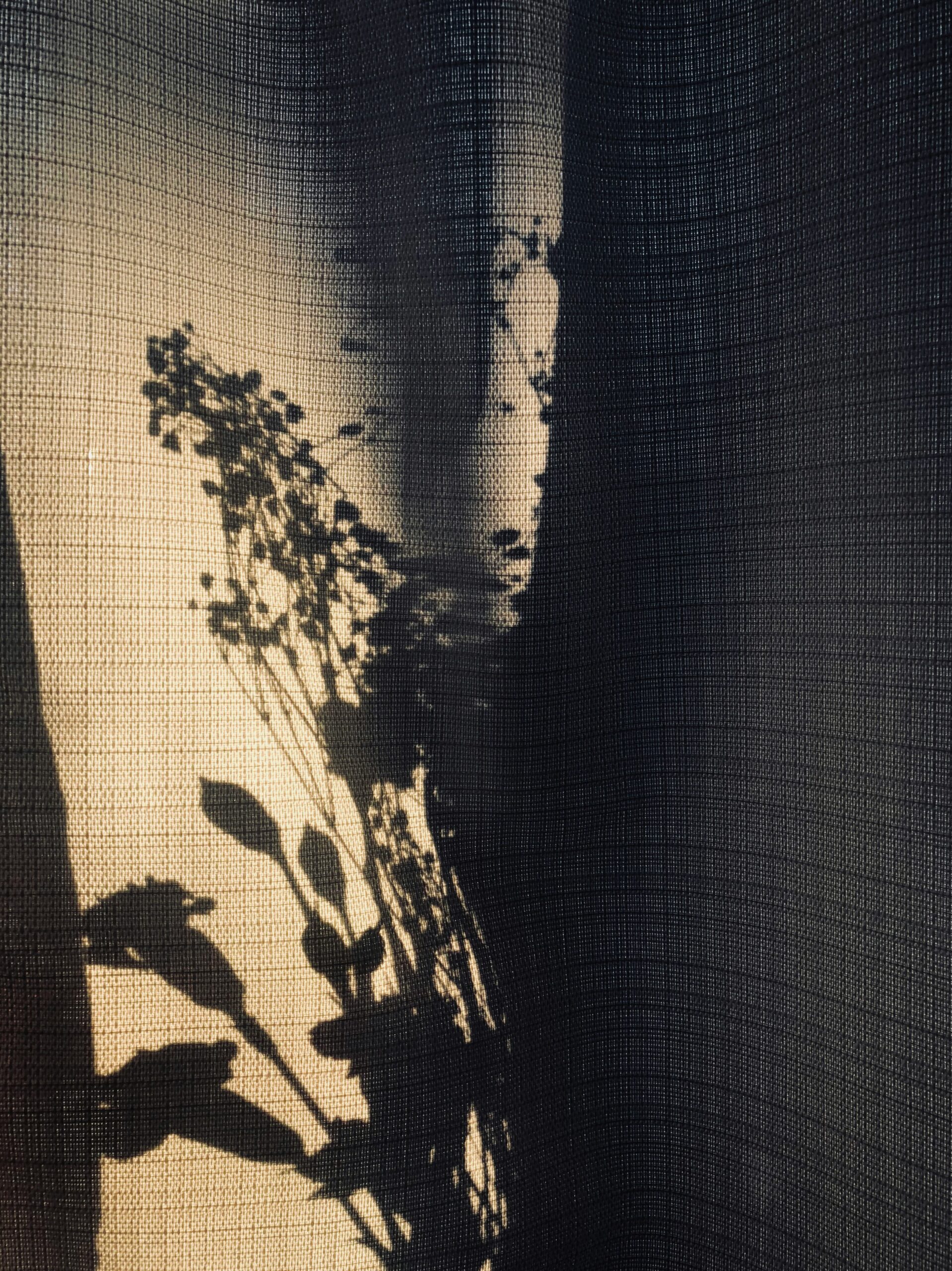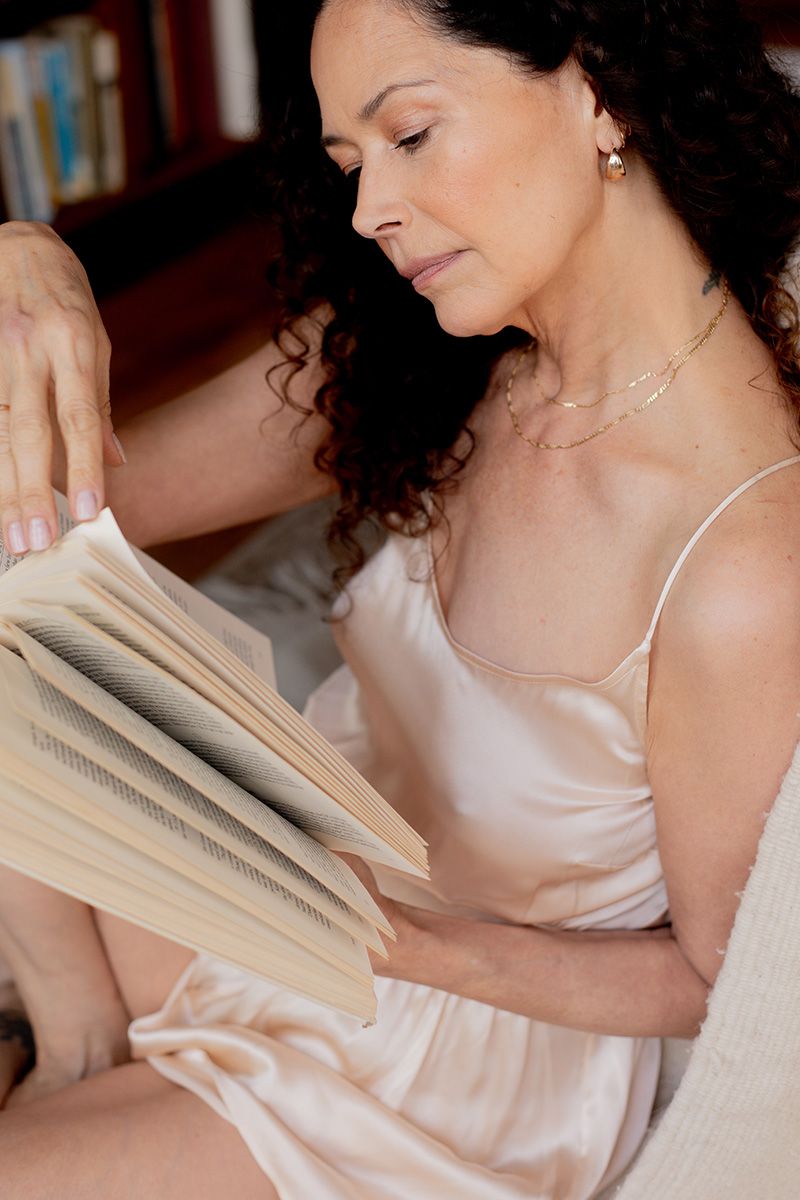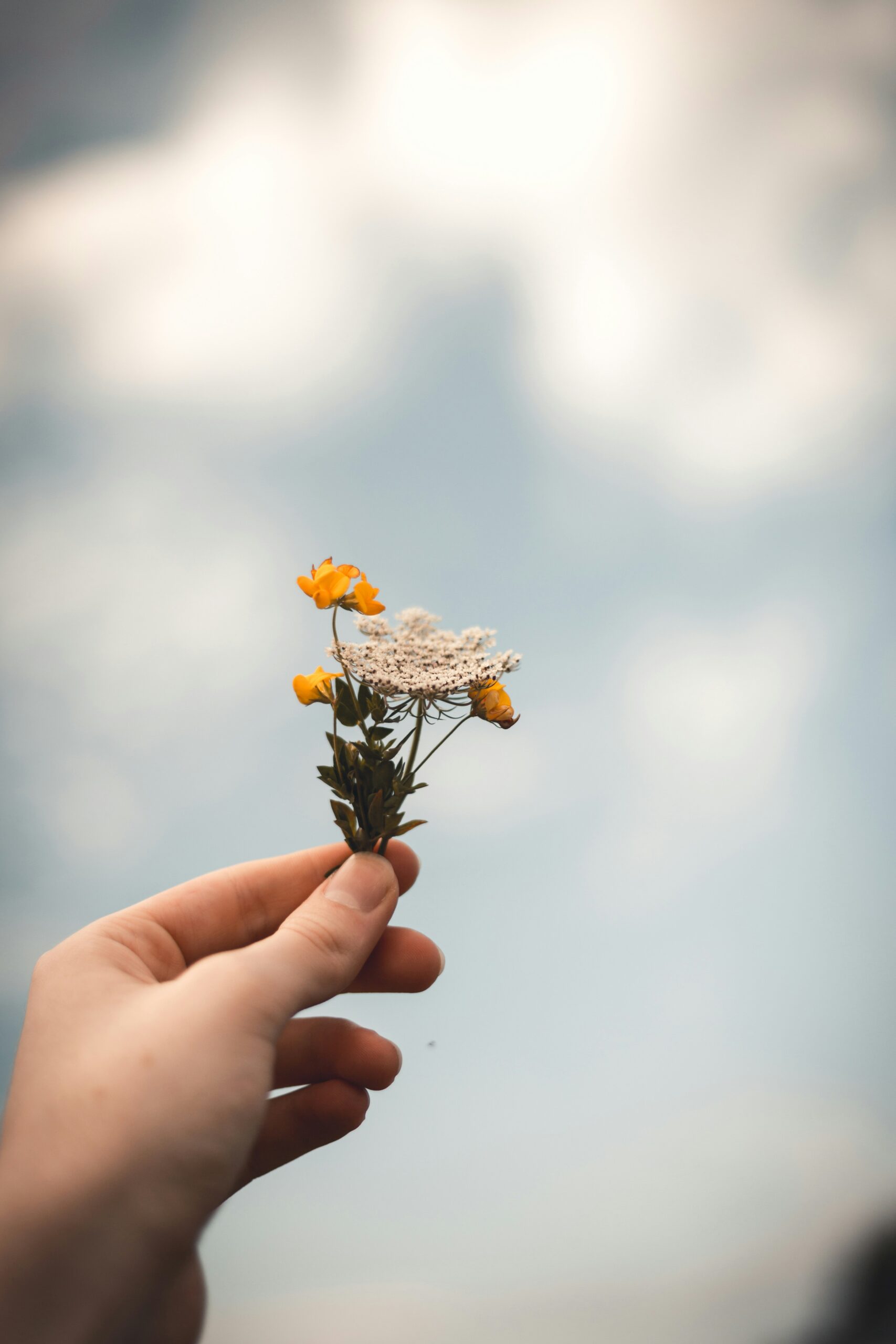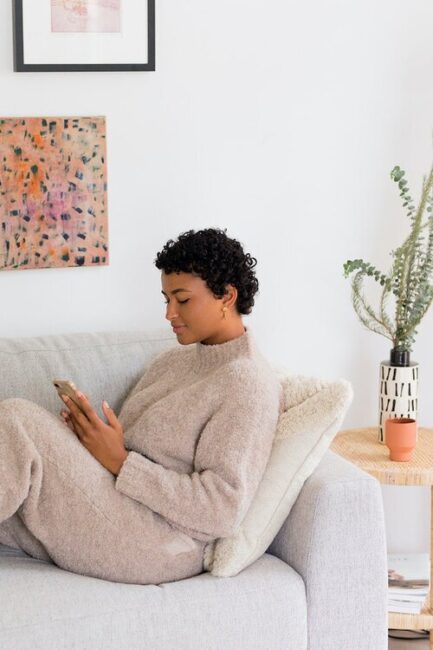
How To Reintegrate After A Social Media Detox
I took a six-week unplanned break from social media in August of 2023. Many things prompted this: Colliding work deadlines, a big creative project, and some uncomfortable dynamics in a friend group suddenly made all the time I spent on the apps feel not only wasted but like active threats to my goals and emotional well-being. I had one of those horrible yet utterly clear moments of realization that being online made me feel vulnerable and stressed in a way that was harming my ability to focus on anything else: I felt the panic in my body, a rush of adrenaline and heat that was pure fight or flight. Without thinking, I deleted the apps. I closed my computer. I left my phone on the desk and I went for a walk.
“Being online made me feel vulnerable and stressed in a way that was harming my ability to focus on anything else.”
In a state of self-preservation where social media felt like an obvious threat, it was relatively easy to not log back in. After a few days, I made a vague plan to stay off the apps until the end of the month. As that date approached, I stretched the end date to after a big deadline for my creative project a few weeks later. I logged back in once to put my accounts to private and to post a note on my profile that I was taking a break. I didn’t read any notifications or messages or scroll. It was shockingly easy. I noticed that I felt even a little empowered and tried to keep that feeling with me for the inevitable moments to come when I might be tempted to go back online for a quick peek.
Those moments rarely came. I was burnt out on social media, and my break felt like breathing room. But I knew I wouldn’t stay offline forever: I use my platforms for work, for connecting with certain communities, and for inspiration. Plus, my husband and I send memes like love letters. I knew the day to log back on was coming, and it would be up to me to fix my relationship with the apps moving forward.
“I wanted to adjust my social media usage to address the problems I was having, namely: Losing a lot of time, emotional energy, and focus to scrolling.”
When my detox end date came, I felt unsure how to proceed. I tried Googling what to do after a break but all the resources I found seemed to be geared more toward content creators and people looking for guidance on how to announce themselves back on the platform. I didn’t want to announce anything; I wasn’t making a statement, I’d just needed a break. So I approached my reintegration as a true firstborn child and just blundered my way through, learning as I went. I wanted to adjust my social media usage to address the problems I was having, namely: Losing a lot of time, emotional energy, and focus to scrolling.
Here is my advice on how to come back to social media from a digital detox in a way that is slow, intentional, and as thoughtful as possible, based on my experience:
Notice when you log on
So much of my reintegration process has been based on observation, starting with noticing exactly under what circumstances I tend to open my apps the most. (This can also be a little pre-work to start before the detox itself, if you’re a planner!)
Every time you pick up your phone to open an app, notice what you’re doing. Are you in a waiting room, at a stop light, or on a commercial break? Are you bored in a meeting? Are you winding down for bed? Or are you looking for something— checking on a page or a person who crossed your mind, looking for the name of an actor, or trying to find that funny meme to show your partner? Notice the circumstances, your motivations, and which platforms you’re drawn to most.
“The better you can understand exactly how you’re using the apps and what need you’re trying to meet, the more likely you are to find an alternative that will stick.”
This is how you might discover new hobbies, websites, games, or even ways to get information that don’t require you to open an app that might easily suck you down an Explore page black hole. If you find you’re picking up your phone whenever you’re waiting, consider using those few minutes to do something else, like a quick five-minute chore or giving yourself a hand massage. Or practice sitting in the quiet, giving your thoughts some space. You might be surprised by what comes up!
If you find that you’ve been using social media to communicate with friends, experiment with a few other methods to connect, like sending voice notes or emails. (Or even calling on the phone!?) The better you can understand exactly how you’re using the apps and what need you’re trying to meet, the more likely you are to find an alternative that will stick.
Be a ruthless curator of your feed
Your feed is more in your control than you think, and you can make it work for you with a little effort. Think about what you want from your newsfeed, then cultivate a following list that will give it to you.
“Come up with your own rules about what gets cut, but I generally do this Marie Kondo-style.”
When you first log back in, I recommend doing a massive cut to your following list. (Ideally, you can do this right before you log off for your detox.) Start with the brands and celebrities and anyone you don’t personally know — there’s less pressure with these platforms since they are likely not going anywhere and are easy enough to re-follow, plus they will absolutely not notice if their followers drop a number. Come up with your own rules about what gets cut, but I generally do this Marie Kondo-style and ask myself, “Does this account spark joy?” If the answer is no, don’t think too much about it, just unfollow.
Next, the people you know IRL. This can be a little trickier. Everyone has different “rules” about who to follow, but in my opinion, just because you know someone or just because they followed you doesn’t mean you must follow back. Again, everyone has different rules, and you can determine what feels right based on the social norms in your circles. My personal feeling is that following someone does not mean that you have to interact with, or even see, every single post and story that they produce. Enter the “mute” tool: For the people in your life who you feel pressured to follow but you don’t particularly want to see their content. They won’t know you muted them, and you can always go to their page to see their posts at your leisure.
“What I want from my newsfeed is not constant, so I’m always editing my following list to align with the season I am in.”
Consider the social media platform itself as well: I keep my Facebook as basically my address book, but Instagram is where I go for creative inspiration. High school acquaintances I am not actually close with who post family updates generally belong on Facebook, so I might not also follow them on Instagram. This cuts back on duplicate posts on all my feeds.
What I want from my newsfeed is not constant, so I’m always editing my following list to align with the season I am in. My current goal is to cull the posts that kick me into the comparison trap and replace them with the ones that make me feel inspired, which is a surprisingly thin line! There isn’t a perfect formula, but keeping up with my following list is one of the key ways to make my social media experience a better fit for me.
Unfollow all the influencers
Trust me on this.
I was a big fan of this one blogger, but as her platform grew over the years and her style (and budget) significantly evolved from relatable to wildly expensive, seeing her pop up on my feed was starting to bum me out. I was comparing without realizing it, constantly perceiving her through the knowledge that this was a woman who was younger than me and “more successful.” She had also been pregnant with her first kid the same time that I was, so watching our daughters grow up simultaneously (they were born almost exactly a month apart), made the disparities between everything from the hospital pics to their first steps to the kind of toys, activities, and wardrobes they had feel like a particular sort of failure on my part. So after this detox, I unfollowed her.
“It can be hard to remember that the woman posting a reel of her morning routine is a professional marketer.”
But there were certain things I had always liked about her page, particularly her use of color (she was an advocate for bold prints and bright colors even during the height of Beige Everything Fever). I missed seeing some of her tablescapes, how she’d incorporate primary colors into an everyday outfit, or wear a big floofy dress to the grocery store. While I had been off Instagram, I’d gone to her actual website from time to time, which felt very nostalgic but also much more manageable and removed. There was something about looking at the web page on my own time versus opening my phone and getting bombarded with her advertisements that felt less personal. I suspect it has something to do with the intimate nature of Instagram, how influencers disguise advertisements as snapshots from their personal lives, tricking us into feeling like we have somehow failed at being as [fill in the blank] by comparison. It can be hard to remember that the woman posting a reel of her morning bathroom routine is a professional marketer because she’s standing in a towel while she sprays her face with a $50 toner. But this is a commercial.
“A website, on the other hand, tends to have all the marketing hallmarks that remind us of the time, staff, and production that goes into each post.”
A website, on the other hand, tends to have all the marketing hallmarks that remind us of the time, staff, and production that goes into each post. The images of the same influencer in her towel posing with expensive toner in a blog post don’t instantly make me feel terrible about my own toner-less morning routine because there are pop ups and affiliate links and clearly staged images next to long paragraphs of ad copy. On the website, her morning routine looks like the ad it is; on Instagram, it looks like a personal post. Oh, I remember thinking. That is how I can take what I like from this person and leave what I don’t. I’ll come to her website.
Unfollow all the influencers. You can always check in on them at your own terms.
Don’t monitor your followers
You might not have this problem! Me, uh, neither. 🥸 But just in case, here are my rules:
- Never look to see if someone still follows you.
- Don’t hunt through posts to check whether a certain person liked it.
Nothing good comes from checking up on who follows you or who did or didn’t like your posts. More often than not you’ll just end up hurting your own feelings.
There are so many reasons why someone might have not hit the like button: maybe they are taking their own social media break; maybe the algorithm didn’t even show them the post; maybe they are in a sensitive place and something about the post was hard to see. Maybe they were scrolling in a weird position in bed, and stretching their thumb to the like button was too strenuous (Hi, 🙋🏻♀️ it me). Who knows! And who cares? I can think of a lot of reasons why I might not interact with someone’s post, so if I want to keep that space for myself, I must extend it to everyone else.
“I can think of a lot of reasons why I might not interact with someone’s post, so if I want to keep that space for myself, I must extend it to everyone else.”
My favorite Instagram feature to combat this problem is the “hide like count” option. Doing this for my own content also hides the counts on other people’s posts, removing a common source of stress for me on the apps. Quieting this tracker also changed my motivations for posting: no longer concerned about getting the most likes possible means I only post what I actually want to share now, and I spend a lot less time filtering and preparing anything beforehand. Though I post less frequently and the images are not always “perfect,” they feel more authentic. And I’m happy with that.
Keep up with your offline activities
One of the things I remember noticing when I got back online was how often I got bored while I was scrolling. I had developed new mental muscles, new needs that social media was no longer meeting. Instead of scrolling before bed, for example, I did an actual skincare routine (with more than one step!). I lit a candle and put on a soothing playlist. I journaled. I did Tarot. Sometimes I did a bedtime yoga routine. Several nights, my husband and I hung out by the fireplace and just talked.
“Continue to honor the ways you were spending your time during the detox, prioritizing what nourished your mind, your space, and your well-being.”
What you were doing during the detox instead of scrolling? Did you read more? Did you get into puzzles? Did you listen to podcasts and give the kitchen a thorough clean each night? (And are you for hire? 😉) Whatever you were doing, don’t stop just because you’re allowed to scroll again. Continue to honor the ways you were spending your time during the detox, prioritizing what nourished your mind, your space, and your well-being.
When I find myself slipping back into old bedtime scrolling habits, I try leaving my phone in another room. If I can’t break the habit, I take a mini-detox break and delete the apps for a few days. There’s a momentum just after the detox that’s easy enough to harness; you just have to pay attention to it.
Give yourself (and others) grace
I’m in my late thirties so many of my peers are sharing the kind of big life posts that can sometimes be hard to see: Divorces and infertility updates intermix with big home renovations and expensive family trips to Paris for the holidays. The content itself is sometimes further complicated by the way it is presented, too: Sometimes people share their lows in great detail, their vulnerability shrouded in anger; sometimes people humblebrag because they want to celebrate but don’t know how; sometimes people complain about the very things that we are desperate to have and, for reasons beyond our control, won’t seem to ever get. I first joined Facebook in 2006, and I feel like I have been the poster and the audience for each of these scenarios in my nearly twenty years online.
“It can be so hard to perceive and to be perceived sometimes.”
I was talking to a friend about some of the reasons I stepped away from my platforms and mentioned these things. “It can be so hard to perceive and to be perceived sometimes,” she said. This is the perfect phrasing. Because social media is just that: a perception. It is not reality, it is the perception of the reality of another person, their life, and their experiences. It is cultivated within the restrictions of the platform and the social conventions currently in use, perceived through the filters of our own life experience and whatever circumstances we might be negotiating at the time. This means that we are not always in the best frame of mind to create or receive the presentation of ourselves and others. We won’t always get it right. We won’t always be able to engage. And that’s okay.
Hold all social media content loosely. Accept that it’s an imperfect tool you won’t always love.
There are myriad ways to do a social media cleanse, and a simple online search will provide lots of tips and tricks to try and find what might be the best fit for you. Whether you’re trying to break the scrolling habit, cut down your screen time before bed, or giving your mental health a break from the barrage of bleak world news (or even just the pressure to feel happy for everyone celebrating big life milestones), it could be time for a social media detox. With the addictive potential built into the design of social media, it can be a challenge to break the habit successfully, and even harder to reintroduce the apps to your life mindfully.
“It’s up to me to make social media fit into my life, not the other way around.”
The biggest takeaway I’ve had from my own detox and re-entry is that it’s up to me to make social media fit into my life, not the other way around. I feel empowered to take what works for me and discard the rest. But with that very concept in mind, what works for me might not for you. There is no one template! It’s a journey, one we might have to take many times, that will be the most enriching when we can approach it with curiosity and mindfulness.
We’d love to hear any digital detox and reintegration tips that have worked for you! Please share in the comments.
Stephanie H. Fallon is a writer originally from Houston, Texas. She has an MFA from the Jackson Center of Creative Writing at Hollins University. She lives with her family in the Blue Ridge Mountains of Virginia, where she writes about motherhood, artmaking, and work culture. You can find her on Instagram or learn more on her website.
